
|
||||||||||||||||||||||||||||||||||||||||||||||||||||||||||||||||||||||||||||||||||||||||||||||||
Histoire
Dès le milieu des années50 L’URSS a mis au point des techniques et du matériel de lutte anti sous marine notamment des avions qui sont censés agir contre les sous-marins notamment les sous-marins nucléaires américains . Ceux-ci mettent en œuvre une panoplie d armes de destruction très puissantes et nouvelles comme les missiles qui ont une portée accrue . Ces armes décuplent la puissance de ces navires qui deviennent les « capital ships « des flottes des grandes puissance ( Soviétique Américaine Britannique et ensuite chinoises et françaises) Avec l entrée en service au début des années 60 d’une nouvelles classes de sous-marins américains mettant en ouvre les fusées Polaris l’URSS se trouve durant cette période sans défense car les sous marins nucléaires occidentaux pourront tirer une salve de missiles à tout moment causant d’énormes destruction et pourront repartir se terrer au fond des océans sans être inquiétés La lutte contre ces sous marins devient alors une des taches prioritaires qui est confiée à la Marine soviétiques. Celle-ci va dont accroitre les moyens de lutté de l ‘Aéronavale qui sera à même de fournir un appui pour contre les sous-marins et les navires ennemis . La résolution du Bureau politique du PC URSS N1180-510 en date du 30 décembre 1961 donne les grandes lignes de cette lutte Identification des menaces Orientation des études Une groupe de travail appelé "Pégase" planche sur le problème entre 1961et 1964 et ainsi peut voir le jour le BBA-14 qui est un engin révolutionnaire dans sa conception et sa C’est un avion construit dans un métal révolutionnaire amphibie et à décollage et atterrissage vertical La base de travail trouve ses sources dans les projets développé en 1962 par l ingénieur RL Bartini.
Robert Louis Bartini était un ingénieur de talent travaillant en Union soviétique, Il a mis au point divers hydravions de recherche polaires les (DAR Deep Reconnaissance de l'Arctique), que sont les "Steel-6" et "Steel-7", Il a travaillé aussi sur d’autres concepts d’aéronef et sur l'aérodynamique et la dynamique de vol. Pour améliorer les performances nautiques des hydravions il propose un nouveau concept de décollage et d'atterrissage sur l'eau. . L’avion pourra hydroplaner sur la surface de l'eau à la verticale. Un peu comme un catamaran Bartini déclare même que l avion pourra opérer sur des mer avec des creux de 4/5metres permettant la mise en ouvre de l’avion en plein Océan Ainsi est mis au point l’engin amphibie MBA-62. Amphibia avec les moteurs situés au centre . Les flotteurs d’aile sont rétractables en vol Le MBA-62 sert de base pour la conception d'un engin de lutte anti sous marine (ASW ) à décollage vertical plus important le VVA-14. Mais cette machine est par trop révolutionnaire avec sa conception aérodynamique, sa motorisation ses systèmes de contrôle pour des conditions transitoires en vol son train d'atterrissage avec deux flotteurs rétractables Toutes ces nouvelles technologie firent que des doutes furent émis sur la faisabilité du programme Toutefois les tests effectués lèvent les doutes De plus cette plate formes d armes permet de projeter au loin la menace sur les sous marins et navires ennemis Le 11 novembre 1965 la Décision du Conseil des ministres de l'URSS et du Comité central du PCUS n° 935-320 portent sur la mise au point de nouveaux avions pour lutter contre les SNLA permettant la naissance de l’amphibie BBA-14 (Вертикально Взлетающая А мфибия с 14 двигателями) Par décision N° 371 du 26 Novembre 1965, la construction du BBA 14 est décidé Cet engin aura deux moteurs ( propulsion ) D-30M et douze ( décollage) RD36-35PR Il es approuvé le 7 Juin 1966 par le Commandant de la Force aérienne et la Marine. Le BBA doit s’intégrer dans un réseau de lutte anti-sous marine destiné à détecter et détruire les sous-marins ennemis dans les zones assez éloignées des cotes ( 1200-1500 km,) en agissant soit de manière indépendante soit en collaboration avec d'autres forces et moyen de la Marine soviétique Il est prévu dans un premier temps de construire trois exemplaires avec des premiers essais devant se dérouler pour le 4e trimestre 1968 Comme le bureau d’études Bartini n’a pas de pilote il est décidé de faire construire le VVA-14 à l’usine OKB 938 Kamov. Mais Kamov n’a pas les compétences pour construire des aéronefs aussi imposants aussi en 1968, RL Bartini devient l’ingénieur en chef du projet VVA-14 au sein du nouveau bureau N° 86 créé de toute pièces à l'usine de Taganrog avec comme adjoint VI Biryulin. Dans le même temps deux décision du Conseil des ministres de l'URSS et du Comité central du PCUS N° 305 du 20 Novembre 1968 et 422 du 25 Décembre 1968 donne l’autorisation de continuer le programme Mais la tache est difficile aussi en 1970 il est décider de réunir toute la documentation pour aboutir à la construction d’ un prototype à décollage vertical Bartini reste le concepteur en chef il est aidé pour les avions amphibies par ND Leonov, et pour les divers équipements par YA Bondarev. Et arrive au final un nouvel ingénieur NA Pogorelov, qui succédé à VI Biryulin Le VVA-14 est un système qui présente des innovations technologiques inhabituelles, nécessitant des heures de recherches et de développement avant même le début des essais en vol. Aussi diverses équipes planchent sur toutes ces innovations se qui conduit à construire divers prototypes pour tester et valider les calculs Les problèmes électriques et de propulsion sont étudiés par le bureau d’études sur les hélicoptères Ukhtomskiy Pour le décollage et l'atterrissage du VVA-14 on teste des modèles réduits d'avions à l'échelle 1/4, équipés de six turboréacteurs TC-12M Un prototype est transféré au ban d’épreuve de la base EDB dans le Guelendjik où il effectue un cycle complet de tests pour étudier le décollage et l’atterrissage sur l’élément liquide Les résultats sont prometteurs . Les divers systèmes de stabilisation du système et de contrôle peuvent facilement résoudre ces problèmes Le pilote d'essai YM Kupriyanov, salut le travail des ingénieurs en disant «On a volé comme le simulateur". Il été prévu de construire trois modèles expérimentaux du BBA-14. 2 exemplaires sont construits rapidement les engins 1M et 2M. Le prototype "1M" a été construit sans les moteurs de sus tension et il est destiné aux essais et réglages portant sur l'aérodynamique et d’explorer tous les domaines de vol sauf les décollage et atterrissage verticaux Afin d'assurer le décollage et l'atterrissage l'avion a reçu un train d’atterrissage avec une roulette de nez orientable comme sur les bombardiers Myaschiev 3M et Tu-22 le prototype « 2M" reçoit la motorisation pour les décollage et atterrissage verticaux sur l eau Avec cette machine ou explore les domaines de décollage et atterrissage verticaux et la transition avec le vol normal et le comportements des appareils d aide à la navigation Les 2 premiers prototypes ont servi à valider des concepts sur la Motorisation Un troisième prototype fut construit pour tester les systèmes d’armes et les équipements spéciaux Les avions sont construits sur un site voisin à l’usine Taganrog mécaniques dont Dimitrov, Golovin est le directeur Durant l’été 1942 les travaux d’assemblage sont finis et l’engin est envoyé en pour l assemblage final . L’avion a une forme très particulière En fait il ressemble à gros coléoptère Le fuselage avec la cabine se trouve suspendu entre 2 gros flotteurs qui ont une longueur de 14 m,pour un diamètre de 2,5 m, et un volume de 50 m3. Ils ont été conçus par l’usine Dolgoprudnenskoye et fabriquée à l'usine de pneus de Yaroslavl IL possède aussi un train d'atterrissage La partie avant possède de grandes baies . Les deux moteurs à réaction se trouvent placés en arrière au dessus des ailes . L’avion reçoit le surnom de Fantômas et aussi le surnom de serpent de Gorynych avec ses 3 tetes ( fuselage central et deux compartiments latéraux) L’ingénieur en chef pour les essais est IK Vinokourov, alors que le pilote d'essai se nomme YM Kupriyanov, Il a pour navigateur LF Kuznetsov. Pour déjouer les services de renseignements « ennemis l’engin est stationné sous des arbres en bordures du terrain d aviation et il reçoit de plus une immatriculation civile de l’Aeroflot CCCP 19172
Entre le 12 et le 14 Juillet 1972 l’engin commence les test de roulage sur la piste d’usine non goudronnée plus rapidement et secrètement l’engin est transféré de nuit vers l'aérodrome voisin Taganrog, qui possède lui de pistes en béton car il sert de base à une école de formation de pilotes
Les tests continuent entre les 10 et 12 août Leurs résultats sont encourageants La vitesse de 230 kilomètres/heure est atteinte et l’avions se comporte normalement, tant au niveau de la propulsion que de l’avionique Le pilote d’essai souligne aussi dans son rapport la bonne visibilité et l’excellente ergonométrie du poste de pilotage (instruments de vol et de navigation et des dispositifs de surveillance de la centrale ) Le premier vol à lieu le 4 Septembre 1972 avec l’équipage composé des pilotes d'essai YM Kupriyanov et LF Kuznetsova. Il dure une heure, et il démontre toutes les qualités de vol de cet avion. Les essais en vol de la première phase se terminent durant l'été de 1973 es résultats confirment que l’appareil est fiable à tous les points de vue et il peut continuer ses essais en vol. le seul incident grave fut la panne du système hydraulique durant le premier vol. Cette panne a été provoquée par la rupture d’un tube de drainage du fluide de la pompe du aux vibrations importantes . La panne é été traitée par l’utilisation d’un tube de caoutchouc Durant l'hiver 1973-74 on installe sur le VVA-14 (1M),divers systèmes et dispositifs notamment les systèmes de purges de flotteurs Chaque flotteur est divisée en 12 compartiment qui possède 1 pneumatique actionné par pression issue des moteurs du compresseur principal. L air circule a travers le flotteur de compartiment en compartiment via des détendeurs. Le système de purge s'est avérée très compliqué a régler . cela a duré durant tout le printemps et l'été 1974 Commence ensuite les tests de flottabilité du VVA L avion est soumis à des tests sévères de panne . Même sur un seul flotteur le VVA continue de flotter . Il peut manœuvrer à la surface de l eau à la vitesse maximale d e35 kms/h. passer cette vitesse la machine commence à piquer du nez d’où un risque de déformation et la destruction du fuselage et des flotteurs Par contre il n ya aucun problème pour le décollage vertical. A la fin des essais l’accent est mis sur l’armement identique au Be-12, IL-38 et Tu-142. Les tests se poursuivent en soufflerie avec un nouvel engin l’ Ekranoplane est 14M1 P mais sans Bartini qui meurt en Décembre 1974 Robert Lyudovikovicha Les essais en vol, continué en 1975 Le premier vol du VVA-14 de serie a lieu le 11 Juin 1975 aux mains de l’équipage YM Kupriyanov et LF Kuznetsova. Entre les 11 et 27 Juin 11 vols d'essai seront réalisés Des problèmes sont signalés au niveaux des flotteurs (vibrations ) Cette remarque des pilotes ne présente pas un danger pourrait être éliminé par une nouveau dessin des parties arrières des flotteurs. De plus l avion possède un système de contrôle automatique de vol Entre Septembre 1972 en Juin 1975 la machine "1M" aura réalisé 107 vol pour un total de 103 heures. A coté du "1M" se trouve l’appareil "2M" qui servant à l’étude des poussées verticales Les versions prévues Sur la base des VVA-14, divers projets sont étudiées visant à créer toute une famille La versions anti navale embarquée à ailes pliables pouvant être basée sur le futur croiseur anti-sous-marin Project 1123, ou sur des pétroliers La version de transport pouvant transporter 32 personnes ou 5000 kg de fret sur une distance de 3300 km. La version RESCO/ SAR avec deux maître-nageur et le médecin. Le compartiment cargo pouvant abriter des équipements de recherche et de sauvetage bateaux équipement (radeaux, treuil, etc.) Cette version serait la même que la version anti sous marine avec une autonomie augmentée de 500 à 1000 km. Dans cette version il pourra prendre à son bord 15 personnes, dont six gravement blessé sur civière. Il possédera aussi des bouées de sauvetage, des cordes de médicaments, d'eau et des vêtements chauds.. La nuit 8 projecteurs escamotables SP-62 pourront être utilisés. Version de recherche et de sauvetage BBA-14PS destinés à la de recherche et de l'évacuation des engins spatiaux qui serviraient en appui des hélicoptères Mi-6PS porter secours à des équipages d’aéronefs en détresse sur la mer, des membres d'équipage de navires coulés et sous-marins Pour la version sauvetage des engin spatiaux le VVA-14PS aura une soute aménage avec équipement médical et treuil L’équipage sera composé en plus des 3 membres d’équipages ( pilote navigateur et mécaniciens de deux maître-nageur et d’un médecin. Version antenne relai ou transpondeur pour mettre en œuvre jusqu'à une hauteur de 200-300 mètres un système de localisation maritime Version Lance missile anti sous marin Le VVA 14 pourra emporte en soute des missile de 3 à 4 tonnes anti sous marin d’une portée de 200 km Un radar sera installé dans la dérive. Devenir du programme Étant donné que l'ensemble du programme a été supprimée, tous les projets sur le VVA-14 n’ont jamais quitté le stade de la planche à dessin .Mais les études n‘ont pas été perdus car cela a servi par la suite pour d’autres matériels
Description technique.
La conception d'aéronefs à décollage vertical est très particulière Le fuselage est composé d’un alliage d'aluminium résistant à la corrosion Il est composé de 3 partie la partie centrale avec la zone « vie » de l’équipage qui à sa disposition des sièges éjectables à l avant et la zone motorisation à l arrière
Dans ce compartiment se trouve les 12 moteurs L'aile est de forme trapézoïdale Pour l’ atterrissage l’appareil possède d’un dispositif de flotteurs gonflables long de 14 m, d’un diamètre de 2,5 m et un volume de 50 m3
Le nettoyage des flotteurs utilisé un système complexe de 12 injecteurs Le VVA 14 possède aussi un train d’atterrissage tricycle escamotable qui se situe dans le nez et des carénage sur les côtés des flotteurs
La motorisation se compose de réacteurs D30M issus du bureau d’études Soloviev d’une poussée de 6800 kgf et de 12 turboréacteurs RD-36-35PR d’une poussée de 4400 kgs issus du bureau d’études Kolosov installés par paire sous le fuselage Il possède 14 réservoirs d’essence qui emportent 15500 litres . Il peut être ravitaillé à la mer. Le système de commande et de gestion du décollage et atterrissage vertical gere les 12 jets installés par paires et les gouvernails Un contrôle automatique assure la stabilisation de la hauteur, la vitesse et l'altitude L'avion est équipé de divers système de sécurité systèmes alerte incendie, antigivrage Pour les communications il possède des équipement de communication radio performants lui permettant de voler par mauvais temps IL pourrait aussi emporter tous les systèmes de contrôles et mises en ouvre des divers armement ainsi que des bouées RSL 1U pour détecter les sous-marins en soute Celle-ci peut emporter pour 2tonnes d’équipements militaires Il pourrait aussi emporter divers système de brouillage actif et passif. Caractéristiques Poids à vide 35.350 tonnes Masse maximale au décollage 52t Equipage 3 Longueur 25.97m Hauteur 6.79m Envergure 28.5m Surface alaire 217.72m2 Motorisation 2 réacteurs DTRD D-30M 12réacteurs DTRD RD36-35PR Carburant 14000 litres Plafond 10 kms Vitesse Maximale 760 km/h Vitesse de croisière 640 kms/h Autonomie 2450 kms ou 2.5 heures de vol Armement de 2 a 4 tonnes 2 torpilles aériennes, 8 charges IGMD-500 ou 16 bombes PLAB-250.
Avion survivant Moscou Surivor plane Moscow (Internet)
ВВА-14. Вертикально Взлетающая А мфибия с 14 двигателями
History
Since mid-1950 in the Soviet Union began the process of forming the anti - Aviation - a new kind of force, designed specifically for action against submarines. Naval Aviation in the past to solve such problems, but in connection with creation in the U.S. nuclear submarines to combat the threat from the depths of the sea came to fore. Nuclear power plants radically changed the conditions and the nature of armed conflict at sea. The submarines were underwater in full sense of the word. Application of nuclear energy has opened up virtually limitless possibility of increasing the full range of scuba diving course. New dalnohodnye homing torpedoes and ballistic missiles have improved immeasurably strike capabilities of nuclear submarines, which are now largely determine the strength fleet.With the release on combat patrol in the early 60-ies of American nuclear submarines armed ballistic missiles "Polaris", the USSR was almost defenseless. Boats in a submerged position came to our shores, could in any time to make a missile salvo, cause immense destruction and leave invulnerable. All this required an immediate and effective response. Fighting nuclear submarines with the aim of preventing nuclear missile strikes is one priorities assigned to the Navy. This will drastically increase the role and value of ASW aircraft, capable of providing effective control of underwater boats of the enemy. "A large anti-submarine direction" in the development of the national Navy allowed undertake an attempt to realize in the metal so revolutionary and unique amphibious aircraft as vertical takeoff and landing VVA-14. Key measures to combat the threat from the ocean depths have been identified Resolution of the CC CPSU and the USSR N° 1180-510 dated December 30th 1961, and to identify specific areas of work as soon as possible, and at future perspective, a number of complex research (NCI). As a result of one of them, R & D "Pegasus" (1961-1964 gg.) Commenced development work on the BBA-14. The basis for the VVA-14 served as the project amphibians MBA-62 developed in 1962 Chief Designer L Bartini. And amphibians, and its creator have been phenomena quite extraordinary for its time.
Robert Bartini Ludwigovich - an outstanding scientist, a gifted engineer, an outstanding personality. Over the years in the Soviet Union, he created a seaplane DAR (deep Arctic reconnaissance) aircraft "Steel-6" and "Steel-7", developed the original schemes of other aircraft. From his pen came the numerous works on aerodynamics and flight dynamics. Studying the problem of improving navigability seaplane RL Bartini proposed new concept of takeoff and landing on water. He offered to go unconventional by, sitting down and taking off on the water surface vertically. Proposed Bartini catamaran guarantee the sustainability of the scheme afloat even with waves up to 4-5 points, allowing the use of such a machine in the open ocean. It is within this concept and was developed by MBA-62. Amphibia was performed under the "tailless" with lift engines located in the center section and sustainer engine aft of the center on the pylon. For of buoyancy at the ends of the center were retractable in flight floats. Management at high speed flight was carried out using aerodynamic control surfaces. At small - with the help of jet rudders. MBA-62 served as the basis for the design of a larger ASW vertically ascending amphibian VVA-14. Much of the new machine - aerodynamic design, traction and hoist propulsion, control systems for transient conditions and in flight landing gear with two inflatable floats and many components were too unusual for its time (though for today, too). All this taken together and raise doubts about the very practically possible to implement such a revolutionary machine. However opportunity to take off and land on land and water in almost any location seaworthiness and high availability on board lowered hydro station (OGAS) outweighed any doubts. In addition to all the quality amphibious aircraft must were to increase its combat capability than conventional machines due enabling the wide dispersal and maneuvering, as well as of action of the provisions of duty afloat. ON November 11TH 1965 Decision of the Council of Ministers came out of the USSR and the CPSU Central Committee n° 935-320 On the establishment of new aircraft to combat missile-carrying submarines " in which it was carried out on the beginning of full-scale development of the amphibian BBA-14 (vertical take-off amphibious with 14 engines). For Decision followed the order MAP N° 371 of 26 November 1965, and tactical and technical requirements on amphibian VVA-14 two-engine D-30M and twelve lifting RD36-35PR approved June 7, 1966 Commander of the Air Force and Navy. VVA-14 was supposed to be part of an anti-aircraft complex consisting of its own aircraft, search and sighting systems Puffin, anti-submarine weapons and systems refueling afloat. Complex intended to detect and destroy enemy submarines in areas remote from the place of departure at 1200-1500 km, as independently and in collaboration with other forces and equipment of the Navy. VVA-14 could be applied in search-and-shock, shock, and search options. It should design and build three copies of the machine with the beginning of the factory Test-first in the last quarter of 1968 His pilot production KB Bartini had not, therefore, the construction of VVA-14 planned to conduct pilot plant OKB 938 N Kamov. But since Kamov not have the people familiar with the specifics of heavy aircraft, In 1968 RL Bartini became the chief designer on VVA-14 again created by EDO at the Taganrog plant 86. Deputy Bartini appointed VI Biryulin. At the same time came the decision of the Presidium of the USSR CM commission on military-industrial Questions N°305 of 20 November 1968 and ordered the MAP N°422 of 25 December 1968 on development of technical design aircraft VVA-14 in Taganrog engineering plant. The task proved too difficult for the new EDB and in 1970 decision by EDO AK Konstantinova develop design documentation and create a prototype vertical take-off apparatus. RL Bartini became the chief designer on VVA-14, leading Designer of amphibians became ND Leonov, on equipment YA Bondarev. Indeed, development work on the BBA-14 directed the Deputy Chief Designer NA Pogorelov, who succeeded VI Biryulina because RL Bartini lived Moscow and Taganrog been on short visits. VVA-14 was a whole collection of unusual technical solutions, each of which required a large amount of development work before beginning of flight tests. With a view to full-scale labor rent aircraft systems and structural elements were designed and built several relevant stands. For labor-power plant on a small pontoon bench built on Ukhtomskiy Helicopter Plant (DC), were carried out experimental work on study of depression and bryzgovogo plume resulting from the impact on the aquatic surface of the jet gas TRD TC-12M. To study the takeoff and landing VVA-14 on various surfaces on UVZ was created a floating gas-dynamic stand-analog of 1410, with authority to make test aircraft model in scale 1:4, equipped with six turbojet TC-12M simulate all the lift engine aircraft. Stand 1410 was transferred to the test and experimental base EDB in Gelendzhik where he made a full cycle of tests to study the takeoff and Landing on the water surface. The results showed, in particular, that the forces and moments applied at the plane with a vertical takeoff and landing, were insignificant and the system stabilization and control aircraft could easily parry them. Combined gas-jet rudders for control the rate and pitch were also worked on the ground stand. For labor-management VVA-14, there were two flight stand: with the mobile and fixed cabins. On the flight stands were even before the first flight thoroughly modes of control of the aircraft, among which was the mode of landing in a intensive dynamic air cushion. In the stands often invited test pilot YM Kupriyanov, who praised the work of their creators, saying on the analysis of the first flight: "We flew as the simulator". Planned to build three experimental BBA-14. In the production run simultaneously two copies of the aircraft, machinery, 1M and 2M. The first prototype "1M" was made without lifting the engines and intended for testing and tuning of aerodynamics and design at all flight conditions, except for a vertical takeoff and landing, the study of stability and controllability of these modes, for testing propulsion system and aircraft systems. To ensure the take-off and landing from the airfield, the plane was set chassis bicycle scheme with controllable nose wheel (in design of the chassis used racks from 3M bombers and Tu-22. Second experimental machine "2M" was to receive a lift engines. It have been studied and practiced the transitional regime and the regime of vertical takeoff and landing from the ground and water, lift propulsion systems, jet management, automation and other systems associated with vertical takeoff and landing. After working out the major technical issues to "1M and 2M it comes to third instance VVA-14. It should have been tested complexes special equipment and weapons, as well as the developed process combat use.Manufactured aircraft in co-operation between the pilot production EDO (Director Plant A. scores) and the neighboring serial Plant Taganrog mechanical Plant. Dimitrov, director Golovin. On the serial plant produced the fuselage, port wing and tail, and assembly installation of aircraft systems and control and recording equipment was for experienced production EDO. By the summer of 1972 the basic work on assembling aircraft VVA-14 (1M) have been completed and wandereth machine assembly shop was transferred to Face for the final finishing before flight tests. VVA-14 had a very unusual appearance. The fuselage with the cockpit passed in center section, on the sides of which there were two large bays with floats and system of their boost. Diversity swept horizontal and vertical plumage. Detachable part of the wing was attached to the caisson of the center. For originality of design of aircraft was nicknamed "Fantomas". Lead engineer for the tests was IK Vinokourov, a test pilot YM Kupriyanov, navigator test-LF Kuznetsov. Parking lot on which the VVA-14, located on the edge of the airfield at small groves called "quarantine", but for the conspiracy "1M" received a civil registration of the USSR-19172 and the symbolism of "Aeroflot" on board.
In the period from 12 to 14 July 1972 commenced the first taxiing airplane and jogging unpaved runway factory airfield. Then from the VVA-14 undocked console wing and tail and observing all the appropriate measures of secrecy, one night transported to neighboring Taganrog airfield, which had concrete runways, which based one of the training regiment Yeysk Military Pilot School.
There, from 10 to 12 August, running continued. Their results were encouraging, VVA-14 for a run to a speed of 230 km / h behaved normally, propulsion and avionics worked without any problems. In its report Test Pilot YM Kupriyanov said: "On takeoff, flying up and mileage plane is stable, manageable, leaving the rate of rise and kreneny no. "Furthermore, drawn attention to the good view from the cockpit and convenient location flight and navigation instruments and monitoring devices for the power plant. First time in the air VVA-14 rose 4 September 1972 with a crew of test pilot YM Kupriyanov and pilot test-LF Kuznetsova. Paulette lasted nearly an hour, showed that the stability and controllability of the machine air in the normal range and no worse than conventional aircraft. As on land, air, VVA-14 looked very unusual, having for its "three-headed" in the form below (the central nose fuselage and two side compartments) another nickname - "Snakes Gorynych." To individual flights as the aircraft maintenance and aircraft-standard for the calibration of flight and navigation equipment was involved the Be-30 Flight tests of the first phase completed by the summer of 1973 The results confirmed that the original scheme with the aerodynamic wing-center - quite viable, and propulsion system and the basic systems operate reliably and perform test flights. But the most significant outcome of this phase of flight tests was the fact that under aircraft in flight near the ground the thickness of the dynamic air cushion was significantly greater relative to the mean aerodynamic chord wing than it previously thought. With an average aerodynamic chord of the VVA-14 10,75 m was feeling the effects of the dynamic cushion from a height of 10-12 m, and at a height of alignment (about 8 m) pillow was already so dense and stable, that YM Kupriyanov on debriefing many times requested permission to leave the handle management and give the car to sit itself. To conduct such an experiment it is true that and not let fear of what may simply not be enough runway.The only serious incident was the failure of the hydraulic system during the first flight. The reason was the destruction of the tube drainage of the working fluid from the pump, because coincidence fuselage vibration frequency pulsations of the liquid. Exit provisions found by replacing the tube with a rubber hose. Although the prospects for real, not paper-lifting system remained highly uncertain, at last, was ready to air landing gear (PVPU). Floats PVPU had a length of 14 m, diameter 2,5 m, the volume of each was 50 m3. They were designed Dolgoprudnenskoye KB units and manufactured at the Yaroslavl tire plant.Therefore, winter 1973-74. VVA-14 (1M), held in the shop pilot production EDO where he was installed systems and devices PVPU. Simultaneously perform static tests on a specially designed float. Issue floats carried twelve controlled pneumatic annular ejectors - one for each compartment of the float. Air High pressure is taken from the compressor main engines. Cleaning PVPU carried hydraulic cylinders, which are impacted by longitudinal bars on the ropes, covering floats, displacing air from the compartments through pressure-reducing valves.Floats and the system of cleaning-release was literally spoon fed different unique devices and systems, therefore, proved to be very complicated in fine-tuning and adjustment, which continued throughout the spring and summer of 1974 Then began the testing phase VVA-14 afloat. Since the chassis all the time marine tests were in retracted position for lowering and lifting machines inflated floats were manufactured specifically erratic trolley. The first step was tested unsinkability aircraft depressurization at bay floats. Collapse of two compartments, one float confirmed that VVA-14 retains normal buoyancy. After the turn of rulezhek gradual increase in speed on the water. Tests have shown that maximum speed should not exceed 35 km / h. At high speeds machine begins to lower the nose to the surface of the water and there is a risk of deformation and the subsequent destruction of soft floats. But for vertical take-off amphibians that speed was quite enough. At the end stage of navigation tests, test flights continued until with floats decorated PVPU. But by that time the interest of the customer to the VVA-14 noticeably waned. The focus was on improving the already enrolled in armament Be-12, IL-38 and Tu-142. It became clear that the lifting engines with appropriate characteristics can not be even in the distant future. Therefore, even in the midst of work on assembling and testing PVPU RL Bartini has decision to finalize the "1M"-type apparatus in the craft of blowing air from the additional engines under the center section. Begun in this direction led to the creation of the pilot ekranoleta 14M1P, but his test already begun without Bartini. In December 1974 Robert Lyudovikovich died. Flight tests, by inertia, and continued in 1975, We had to try PVPU and the behavior of the machine with issued floats in the air. Previously held a series of walking and flying up with a gradual increase in the degree of release floats (for the aircraft hydraulic system has been appropriately modified). First flight of VVA-14 with full production and harvesting of floats in the air, held on 11 June 1975 with a crew of YM Kupriyanov and LF Kuznetsova. Just Between 11 and 27 June, in the test flights were carried out 11 issue-cleanings PVPU. Special problems in the behavior of the machine in the air released floats are not aroused. Arisen in the vibration testing of aircraft with swollen floats with flaps down, "as if jogging on a dirt strip" on Remark pilots, the danger is not represented and could be eliminated by changing forms the caudal parts of the floats. All attempts to scour the plane when released PVPU steadily parried an automatic control system ACS-M. These flights were the final chord in the history of BBA-14. Results from September 1972 in June 1975 on the machine "1M" was performed 107 operations with a touch more than 103 hours. After the termination of VVA-14, the plane "1M" rolled into the shop at alterations in experimental ekranolet 14M1P assembled glider machine "2M" driven to the far side of the factory parking lot, one for vertical taking off amphibians have not started to build. On the basis of VVA-14 there were projects to create modifications for different purposes. Ship option would be folding console wing and tail, and could based on anti-submarine cruisers Project 1123, specifically equip large dry cargo vessels and tankers, or the anti - cruisers, carriers BBA-14. The transport version of the VVA-14 could carry 32 persons or 5000 kg of cargo a distance of 3300 km. In search and rescue variant of the crew of amphibians further included two lifeguard and the doctor. The cargo compartment contains special equipment (boats, rafts, winch, etc.). Flight performance VVA-14 rescue version remained virtually the same as in the ASW aircraft with the exception of range, which could be increased by 500-1000 km. Another search and rescue version of amphibians - BBA-14PS intended for search and evacuation of the spacecraft and the landing module automatically devices at sea and would complement the already in-use helicopters Mi-6PS. In addition to participation in the space program VVA-14PS had to perform tasks Search and Rescue crews of aircraft in distress over sea, crew members of sunken ships and submarines risen to the surface from the wreck in the pop-up cameras and logging. As a prototype search and rescue amphibian could take off and land on land and water almost anywhere, would have a high seaworthiness, would be based on ships, on water and on ground floors. In the "space" version of the VVA-14PS on-site cargo bay was fitted with salon medical equipment for the rest of Astronauts, the compartment for the transport lander, the system for its podtsepki and loading, on-board winch, containers with rescue boats LAS-5C and rafts PSN-6A. The crew except the pilot, navigator and flight engineer were two lifeguard and the doctor. Regular version of the search and rescue amphibians differed from the "space" more modest set of equipment (in particular, no system recovery capsule) and could take on 15 people, including six seriously wounded, for they provided a stretcher. The car was equipped with lifebuoys, ropes with floats, supply of medicines, water and warm clothes. To work at night mounted retractable floodlight SP-62. Since the entire program to create a vertical take-off amphibious aircraft VVA-14 was phased out, all the work on VVA-14PS never left the stage of conceptual project. Variant aircraft transponder for VVA-14 was planned to develop special antenna and a system to lift to a height of 200-300 meters, in finding machine afloat. At BBA-14 provided for the installation of search and long-term impact of the complex "Pole" to defeat missile submarines at a distance from the aircraft at least 200 km. In this embodiment Amphibian carried one missile air-to-surface missile weight 3000-4000 kg, up to 9,5 m and the caliber of 700-780 mm in the bottom of the fuselage and radar range-finder on the tail fin. In addition, this option is selected infrared direction finder and a panoramic radar. All these works are not out of initial stage of consideration of the technical proposals and considering customer.But in general, the effort is not wasted. As a result of tests was received extensive experimental material, and the work itself over the VVA-14 was excellent school for professionals EDO.
Technical description.
The design of VTOL aircraft is made by the scheme vysokoplana with a composite wing of bearing center section and consoles spaced horizontal and vertical tail and float landing gear. Design is mainly made of aluminum alloy with corrosion - kadmirovannyh and coated steels. Semi-monocoque fuselage construction, which goes to the center section. In bow placed triple cabin crew is removed during emergency situations and provide salvation crew throughout the flight envelope without the use of ejection seats. For cabin located powerplant compartment 12 lift engines and cut weapons.
The wing consists of rectangular center section and detachable parts (Pts) trapezoidal shape in terms with the angle of the transverse V +2 and wedged 1 formed profiles with relative thickness 0,12. On Pts are around span slats, flaps odnoschelevye and ailerons. With center-interfaced to cigar-shaped fairing on which placed feathers and PVPU. Plumage cantilever, located on the fairing, swept. Horizontal tail with a total area 21,8 m2 a sweep leading edge 40 equipped with rudders height of the total area of 6,33 m2. Vertical tail dvuhkilevoe total area 22,75 m2 has sweep on the leading edge 54 total area of the rudders 6,75 m2.
Air landing device includes an inflatable floats length of 14 m, diameter 2,5 m and a volume of 50 m3, which are in 12 compartments. For release and cleaning floats used complex mehanogidropnevmoelektricheskaya system 12 ring injectors (one for each compartment). The air in the system is fed of the compressor main engines. For transport aircraft on the ground provided retractable tricycle wheeled chassis with a nose support and main pillars in the fairing on the sides floats, each bracket has two wheel. Power plant combined, consists of two propulsion bypass D-30M engine thrust of 6800 kgf (General Designer PA Solovyov) established number in individual nacelles top of the center, and 12 lift turbojet RD-36-35PR thrust of 4400 kgf (chief designer PA Kolosov,) that are installed in pairs with bend forward in the compartment of the fuselage with opening up doors air intakes for each pair engines and lower sashes with lattices, the deviation of which could regulated. Hoisting engines for Top flight tests were not reported, and flights of the aircraft were without them. Envisaged use auxiliary power unit with turbocharger.
The fuel system consists of 14 tanks, two tank compartment, and 12 self-sealing tanks total capacity of 15 500 liters. This end, provisions installation of refueling at afloat.The control system provides The aerodynamic control surfaces with using servo as in conventional airplanes, and management regimes on vertical takeoff and landing and transient conditions was carried out with 12 jet rudders installed in pairs and using compressed air bleed from the lift engine. System Automatic control provides stabilization in pitch, rate and altitude all flight regimes.Airborne Systems. The aircraft is equipped all necessary for the operation systems: the fire in the compartments power plant, with a supply of anti-icing hot air to the wing leading edge, tail and air intake, there are oxygen system and air conditioning system air. Equipment. The aircraft was found necessary for flight Test flight navigation and radio communication equipment and envisaged use the latest equipment to ensure automatic stabilization during takeoff and landing and en route for autonomous flying in bad weather conditions. In rescue version VTOL intended to equip rescue radio. At antisubmarine VTOL intended to use search and the sighting Petrel system providing search for submarines and definition coordinates and the necessary data for use of weapons. To detect submarines expected use 144 radiogidroakusticheskih buoy RSL-1U and up to one hundred explosive sources sound, as well as search aeromagnitometr Bor-1. Armament. In antisubmarine variant be located in the bomb bay Various military equipment weighing up to 2000 kg: 2 aerial torpedoes, or 8 aircraft min IGMD-500 (an increase in combat Load up to 4000 kg) or 16 bombs PLAB-250. For defense route patrol Technical data Wieght Empty 35.350 tons Weigth Max 52t Crew 3 Length 25.97m Heigth 6.79m Wing span 28.5m Wing aerea 217.72m2 Powerplant 2 jet engines DTRD D-30M 12 jet engines DTRD RD36-35PR Fuel 14000 litres Ceiling 10 kms Speed Maximal 760 km/h Speed Cruise 640 kms/h Range 2450 kms or 2.5 hoursl Armament 2 a 4 tons 2 aerial torpidoes, 8 Deepth charge IGMD-500 ou 16 bombs PLAB-250. |
|
Droit d’auteur La plupart des photographies publiées sur ce site sont la propriété exclusive de © Claude Balmefrezol Elles peuvent être reproduites pour une utilisation personnelle, mais l’autorisation préalable de leur auteur est nécessaire pour être exploitées dans un autre cadre (site web publications etc) Les sources des autres documents et illustrations sont mentionnées quand elles sont connues. Si une de ces pièces est protégée et que sa présence dans ces pages pose problème, elle sera retirée sur simple demande. Principaux Collaborateurs:
Nb
de visiteurs:8740648 Nb
de visiteurs aujourd'hui:1506 Nb
de connectés:66
| ||||||||||||||||||||||||||||||||||||||||||||||||||||||||||||||||||||||||||||||||||||||||||||||





.jpg)
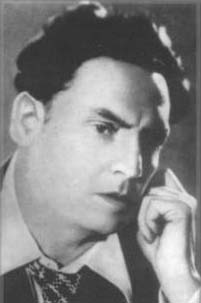
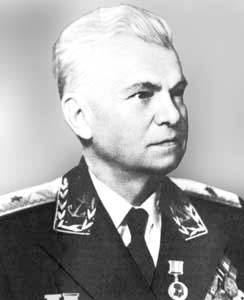
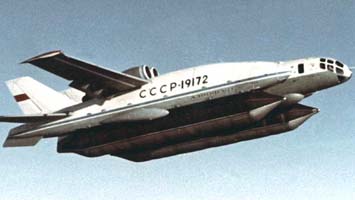
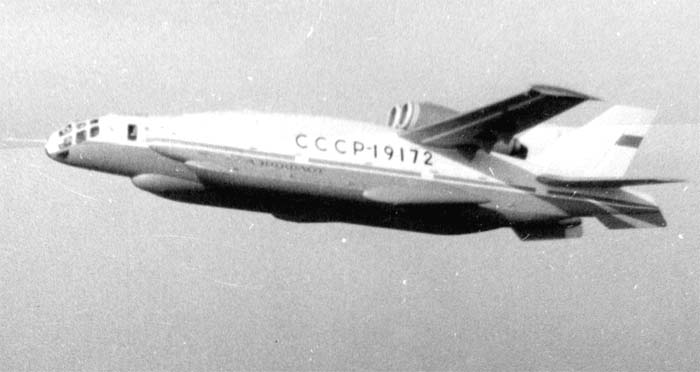
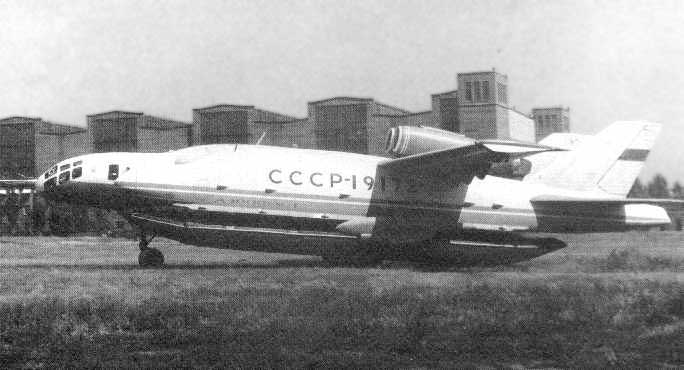
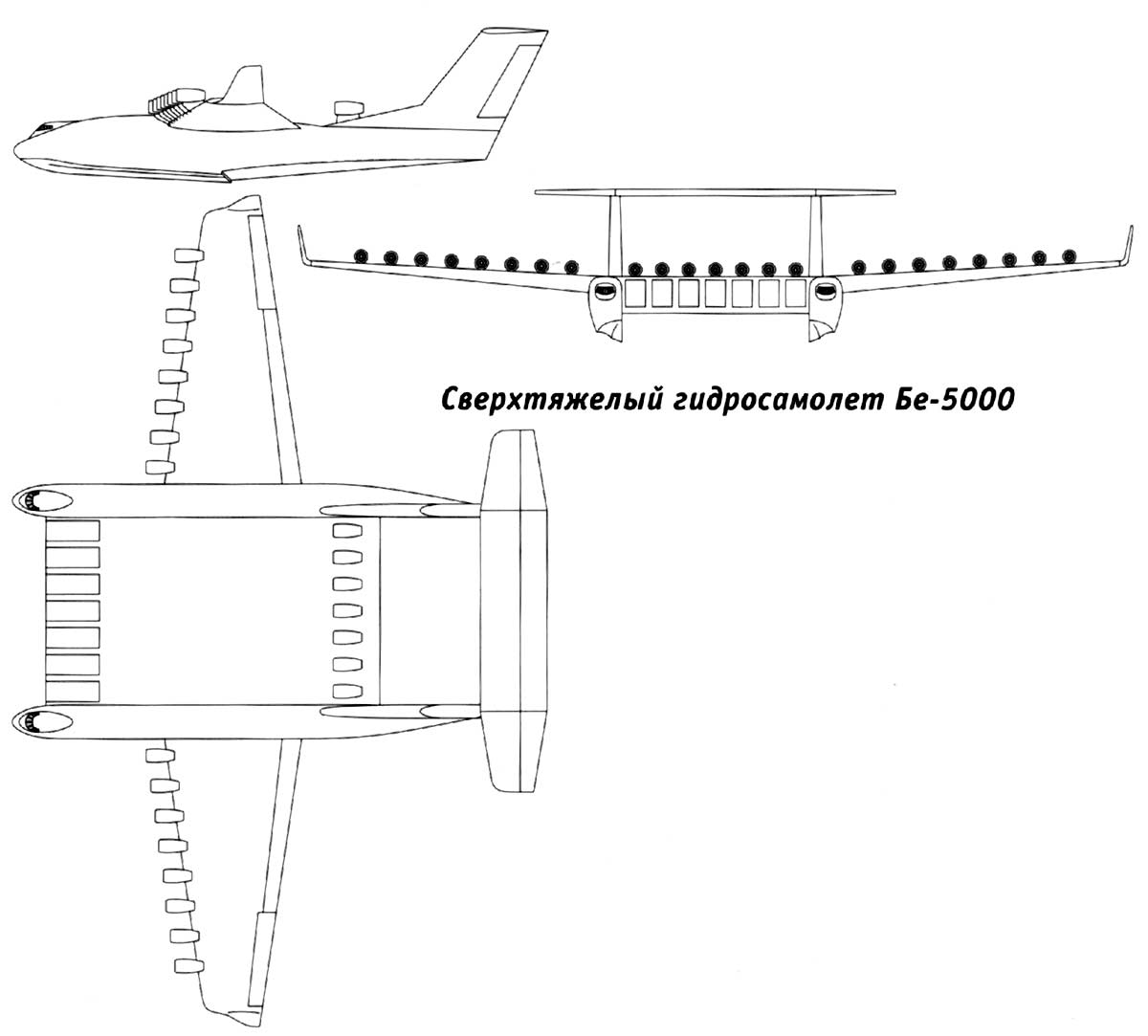
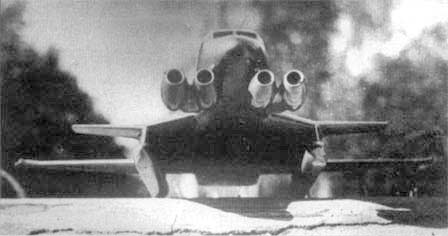
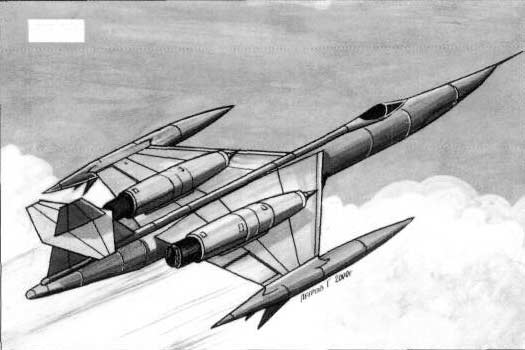

.jpg)
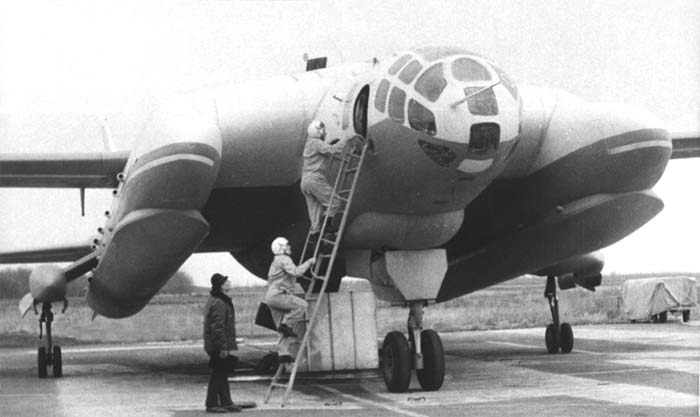
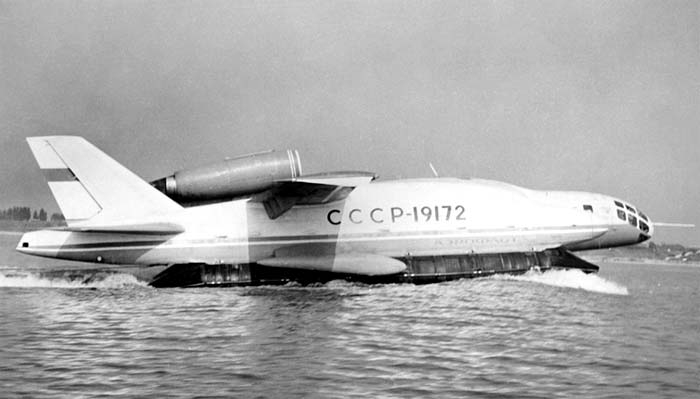
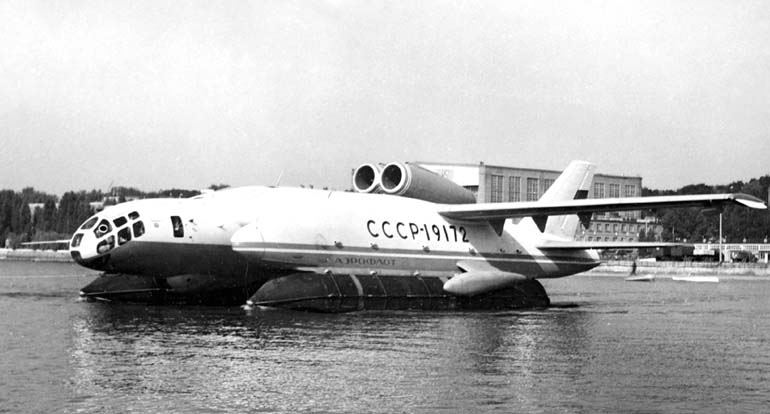
.jpg)
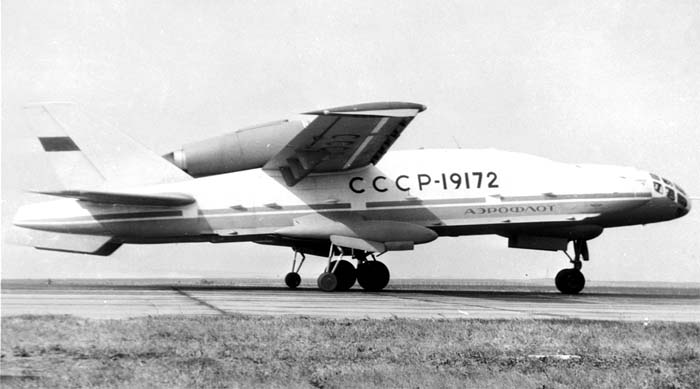
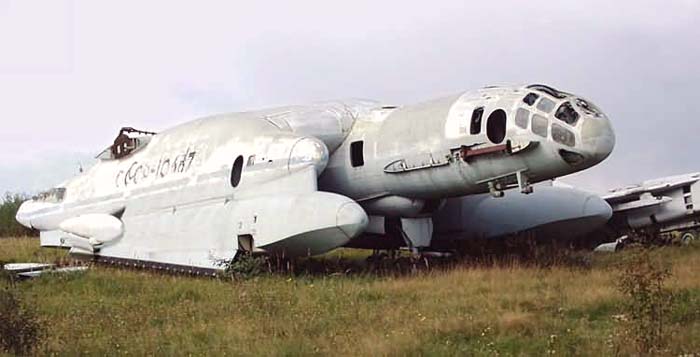
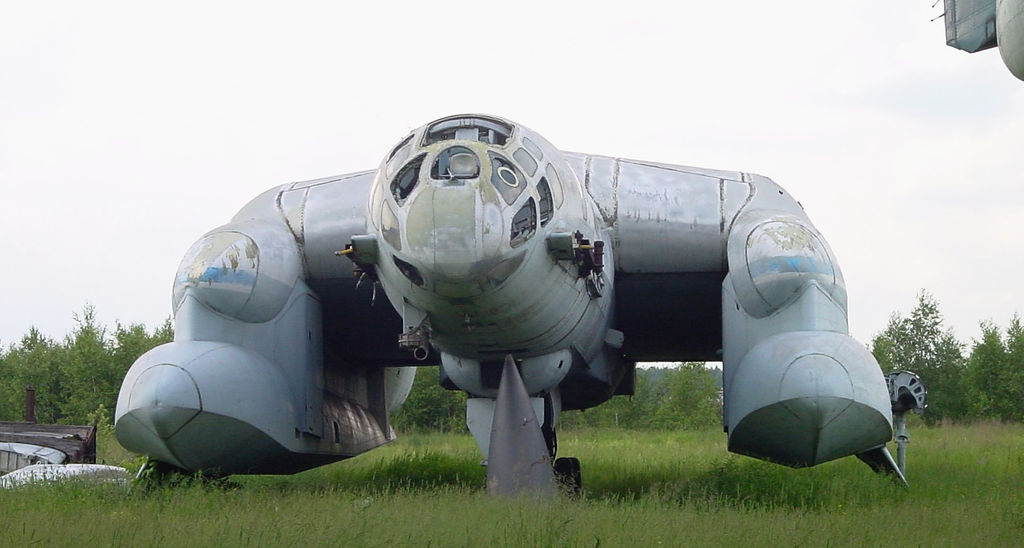
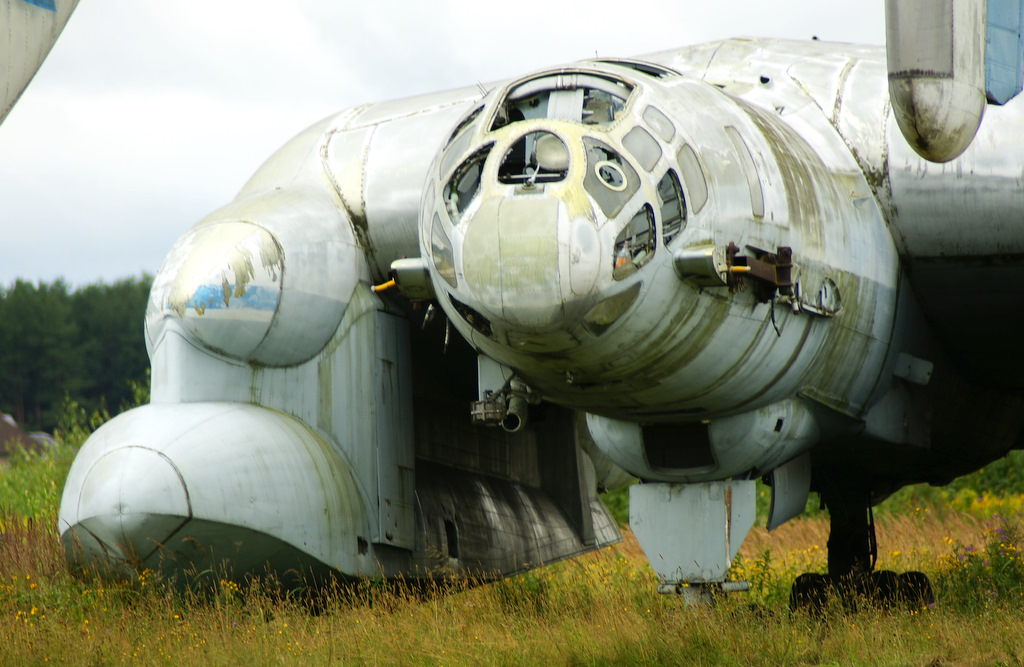
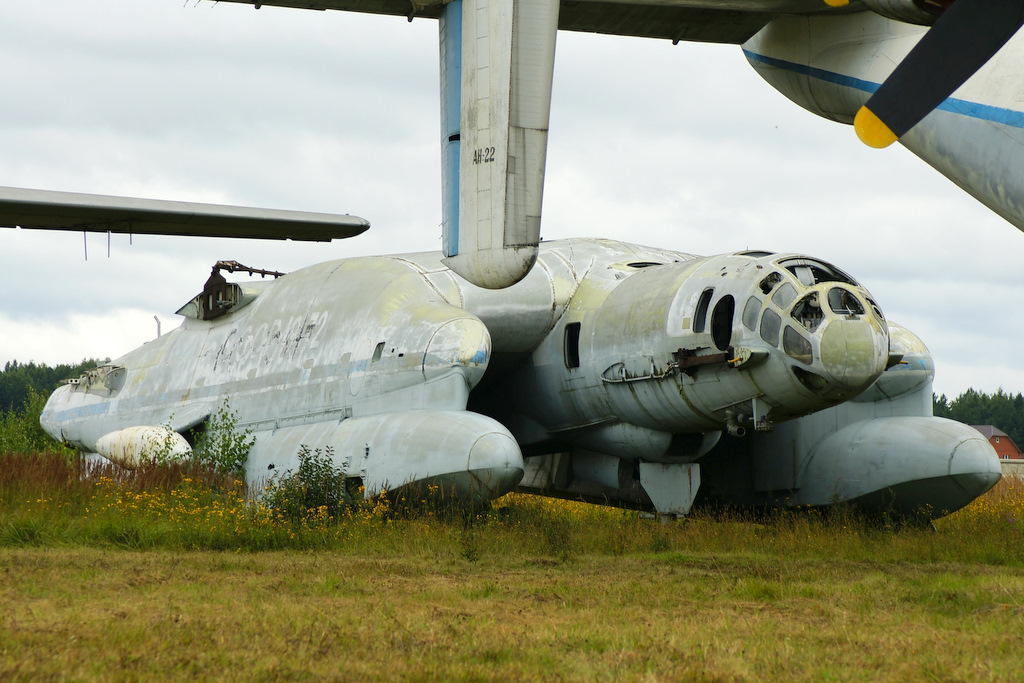
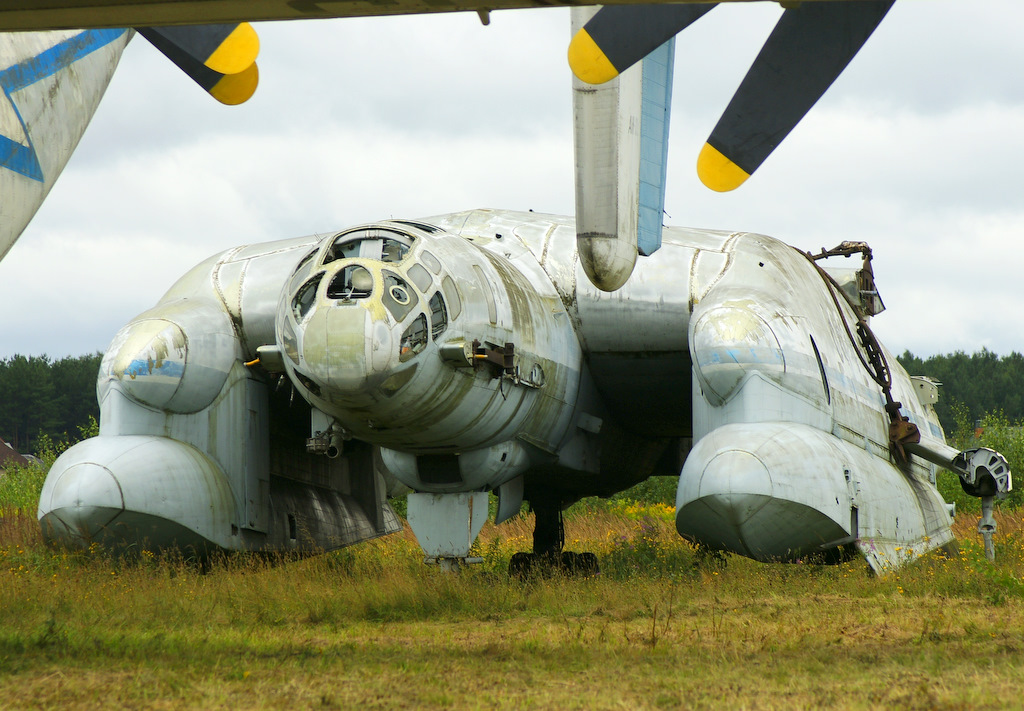
.jpg)